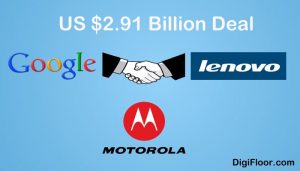In business management, vertical integration is an arrangement in which the supply chain of a company is owned by that company. Usually each member of the supply chain produces a different product or (market-specific) service, and the products combine to satisfy a common need. Vertical integration has also described management styles that bring large portions of the supply chain not only under a common ownership, but also into one corporation.
Vertical integration and expansion is preferred because it secures the supplies needed by the firm to produce its product and the market needed to sell the product. Vertical integration and expansion can become unattractive when its actions become anti-competitive and hinder free competition in an open marketplace. Vertical integration is one method of avoiding the delay problem. A monopoly produced through vertical integration is called a vertical monopoly. For example, Google purchased “Motorola Mobility” in 2012 as a dedicated Android partner which enabled Google to supercharge the Android ecosystem for enhancing competition in mobile computing. The deal didn’t end here. In 2014m Chinese firm Lenovo acquired the Motorola Mobility smartphone business from Google for $2.91 billion in a cash-and-stock deal. The acquisition would strengthen Lenovo’s position in the smartphone market and grow its presence in the USA.
A company that undergoes vertical integration acquires a company that operates in the production process of the same industry. Some of the reasons why companies choose to integrate vertically include strengthening their supply chain, reducing production costs, capturing upstream or downstream profits, or accessing new distribution channels. To do this, one company acquires another that is either ahead or behind it in the supply chain process.
Vertical Integration strategy is important for many companies for several more reasons. Not only does it increase profits from the newly acquired operations by selling its products directly to consumers, it also guarantees efficiencies in the production process, and cuts down on delays in delivery and transportation.
For example, Ikea furniture to gain control over its raw materials for its flat pack furniture, purchased woodland in Romania and the Baltics to coordinate its own forestry management and wood production. The Swedish company’s investment will allow the retailer to stabilize its timber costs, at a time when prices are on the rise.
Companies can integrate vertically in two ways: backward or forward. Backward Integration occurs when a company decides to buy another company that makes an input product for the acquiring company’s product. For example, Apple retails most of its apps online through Apple Store.
Forward Integration occurs when a company decides to take control of the post-production process. For example Amazon.com Inc’s acquisition of grocery store chain ‘Whole Foods Market’ for $13.7 billion will help them dominate grocery sales both offline and online. However, so far the deal markedly expanded Amazon’s reach offline.
Advantages of Vertical Integration:
Helps in avoiding supply disruption: The first benefit is that the company can avoid supply disruption. By controlling its own supply, it can avoid the problems of sluggish suppliers. It also in neglecting the frequent strikes and labor disputes from companies those are in socialist countries such as China, Vietnam.
Avoid monopoly suppliers: Second, a company benefits by avoiding suppliers with a lot of market power and their dictations. It gets all the more critical if the supplier has monopoly in market. If the company can go around these providers, it reaps many benefits. It can lower internal costs and have better delivery of needed items. It’s less likely to be short of critical elements.
Economies of scale: Third, vertical integration gives a company better economies of scale. That’s when the size of the business allows it to cut costs. For example, it can lower the per-unit cost by buying in bulk. Another way is to make the manufacturing process itself more efficient. Vertically integrated companies eliminate overhead by consolidating management.
Imitation becomes easier: A retailer with vertical integration knows what is selling well. It can easily “knock off” the most popular brand-name products; because it copies the ingredients or manufacturing process. It creates similar, store-branded products with similar marketing messages and packaging. Only powerful retailers can do this. The manufacturers of those brands cannot afford to sue for copyright violation. They are unwilling to risk losing distribution through a major retailer.
Lower the cost: The fifth advantage is the one that is most obvious to consumers. That’s low prices. A company that is vertically integrated can lower costs. It can transfer those savings to the consumer as lower prices. The best example is of Wal-Mart. The store keeps costs low by using a sophisticated and largely automated supply-chain management system, Wal-Mart has huge bargaining power when it comes to its suppliers. Many brands depend on Wal-Mart sales to stay in business, while even larger, established companies can little afford to be removed from Wal-Mart’s passageway or WebPages.
Disadvantages: The biggest disadvantage of vertical integration is the expense. Companies must invest a great deal of capital to set up or buy factories. They must then keep the plant running to maintain efficiency and profit margins.
Secondly, it reduces flexibility. Vertically integrated companies get entangled in the profitability of its operations. Retailers can’t follow consumer trends that take them away from their factories. They also can’t change factories to countries with lower exchange rates. Also, vertically integrated suppliers must manage inventory by keeping sufficient stock products in their stores. A third problem is a loss of focus. Running a successful vertically integrated business requires a different set of skills; it’s difficult to find capable staff.













































